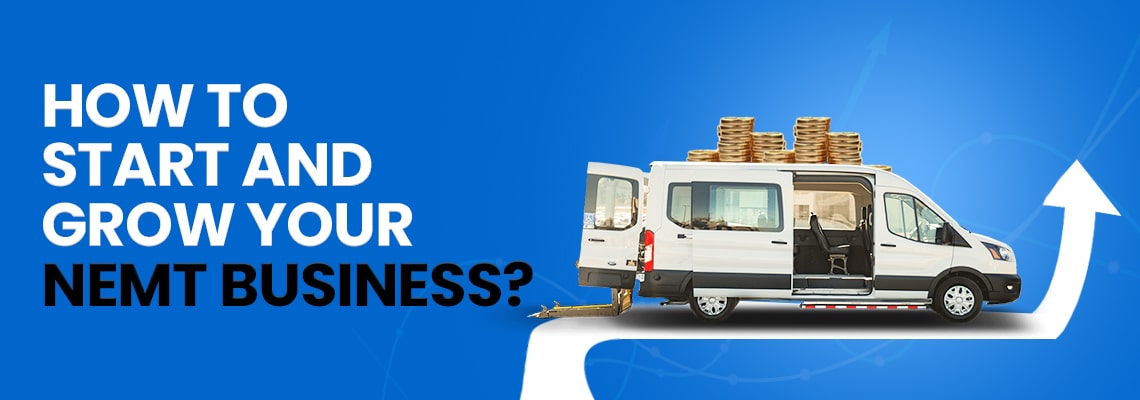Starting and growing a NEMT Business can be a highly rewarding venture, both financially and in terms of the impact you make on your community. Non-emergency medical transportation (NEMT) services help patients get to appointments, dialysis, physical therapy, and other healthcare needs safely and reliably. However, like any business, succeeding in this industry requires strategy, planning, and the right tools.
At NEMT Cloud Dispatch, we provide advanced software solutions that make managing your NEMT operations more efficient, helping your business thrive.
Understanding the NEMT Industry
The non emergency medical transportation business is growing rapidly due to an increasing aging population and the rising demand for accessible healthcare. Patients with mobility challenges, chronic illnesses, or post-surgery recovery often rely on professional transportation services to reach medical appointments. This growing demand creates a golden opportunity for entrepreneurs interested in starting a medical non emergency transportation business.
However, competition is increasing, making efficiency, reliability, and customer satisfaction critical differentiators. Leveraging technology like NEMT Cloud Dispatch can provide the edge your business needs.
Step 1: Planning Your NEMT Business
Before starting a NEMT Business, it’s essential to create a solid business plan. A strong plan should cover:
- Target Market Analysis: Identify who your customers are—elderly patients, disabled individuals, or healthcare facilities.
- Service Area: Decide the regions where your business will operate.
- Fleet Requirements: Determine the types of vehicles needed—wheelchair vans, stretcher vehicles, or ambulatory transport.
- Compliance and Licensing: Understand federal and state regulations for operating a non emergency medical transportation business.
- Financial Projections: Estimate startup costs, recurring expenses, and revenue potential.
A thorough business plan not only guides your operations but also helps when applying for funding or partnerships.
Step 2: Acquiring the Right Vehicles and Equipment
A successful medical non emergency transportation business depends on a reliable fleet. Investing in the right vehicles ensures patient safety and comfort. Consider:
- Wheelchair-accessible vans
- Stretcher transport vehicles
- Vehicles equipped with safety restraints and GPS tracking
Using NEMT Cloud Dispatch, you can streamline fleet management by tracking vehicle maintenance, scheduling rides, and optimizing routes. This technology ensures your NEMT Business operates efficiently, reducing downtime and improving client satisfaction.
You Can Also Read: How Can Marketing Help Grow Your NEMT Business?
Step 3: Licensing, Insurance, and Compliance
Compliance is non-negotiable in the non emergency medical transportation business. To operate legally:
- Obtain the necessary state and federal licenses
- Secure commercial vehicle insurance
- Train drivers in patient handling and safety protocols
- Follow HIPAA regulations for patient privacy
NEMT Cloud Dispatch helps you stay compliant by maintaining digital records, monitoring driver certifications, and automating reporting requirements. This level of expertise builds trust and authority for your medical non emergency transportation business.
Step 4: Hiring and Training Staff
Your drivers and administrative staff are the backbone of your NEMT Business. Prioritize:
- Hiring compassionate, trained drivers
- Providing CPR and first-aid training
- Ensuring staff understands patient care and privacy
- Using technology for efficient dispatching and route planning
With NEMT Cloud Dispatch, scheduling, training updates, and performance tracking become effortless, allowing your team to focus on delivering excellent service.
Step 5: Marketing Your NEMT Services
Effective marketing is critical for growing your non emergency medical transportation business. Some strategies include:
- Building a professional website and leveraging local SEO
- Engaging with healthcare facilities, nursing homes, and clinics
- Using social media to highlight services and client testimonials
- Offering referral incentives for satisfied customers
Highlighting that your medical non emergency transportation business uses advanced software like NEMT Cloud Dispatch can be a strong selling point, showcasing efficiency and reliability.
Step 6: Optimizing Operations with Technology
Efficiency can make or break a NEMT Business. NEMT Cloud Dispatch provides advanced tools to:
- Manage scheduling and dispatching in real-time
- Optimize routes to save time and fuel costs
- Monitor vehicle usage and maintenance schedules
- Handle billing and broker management seamlessly
Technology integration not only boosts productivity but also enhances patient experience, giving your non emergency medical transportation business a competitive advantage.
Step 7: Scaling Your NEMT Business
Once your operations are running smoothly, scaling is the next step. Consider:
- Expanding your service area
- Adding specialized vehicles for higher-acuity patients
- Partnering with healthcare organizations and brokers
- Leveraging NEMT Cloud Dispatch analytics to identify growth opportunities
Scaling effectively requires a combination of operational efficiency, market insight, and strategic partnerships—all achievable with the right tools and planning.
Conclusion
Starting and growing a NEMT Business is more than just owning vehicles—it’s about providing safe, reliable, and compassionate transportation for patients. By planning carefully, complying with regulations, hiring trained staff, marketing effectively, and leveraging technology like NEMT Cloud Dispatch, your non emergency medical transportation (NEMT) business can thrive in this growing industry.
If you’re ready to streamline operations, boost efficiency, and grow your medical non emergency transportation business, Request a Demo of NEMT Cloud Dispatch today and take your business to the next level.


